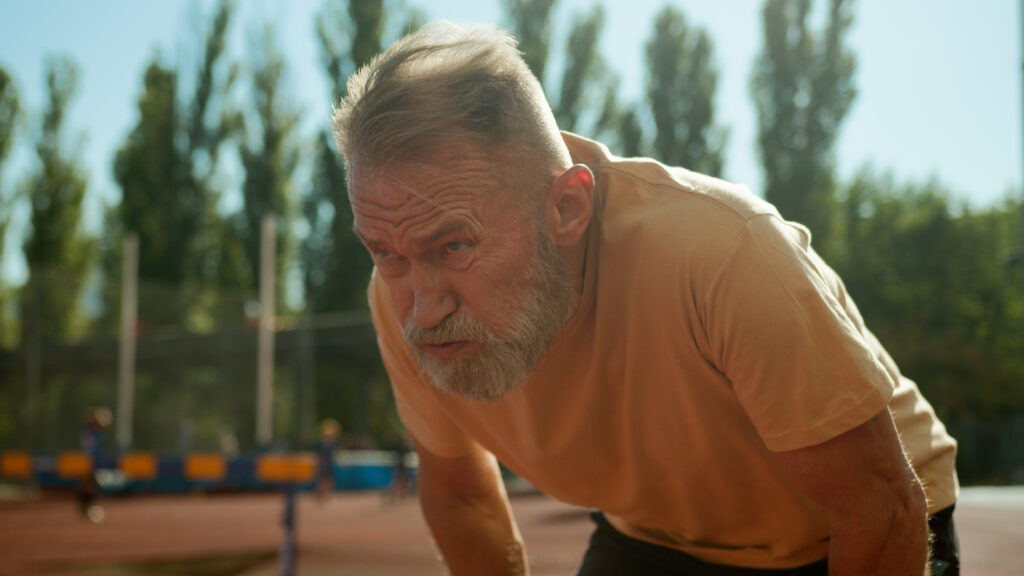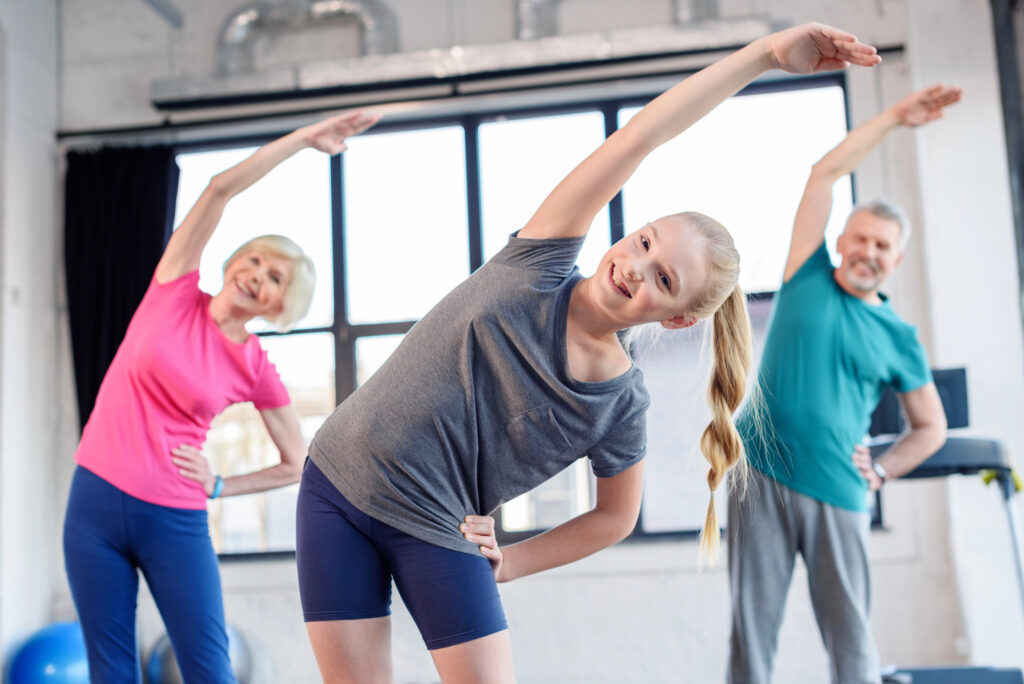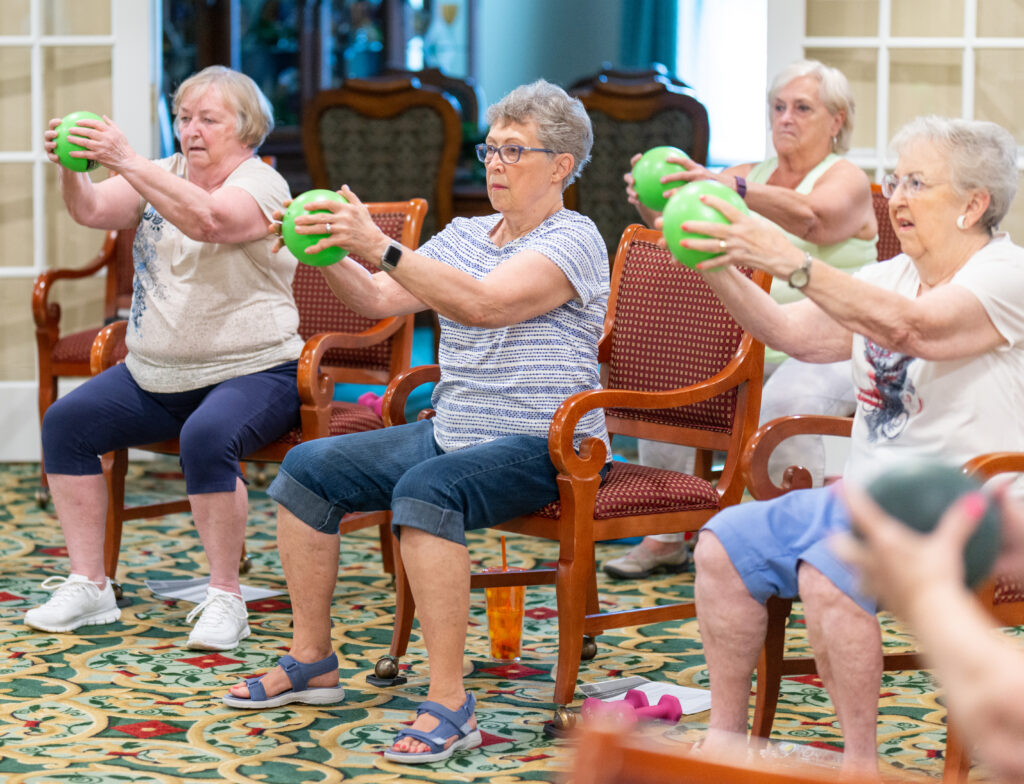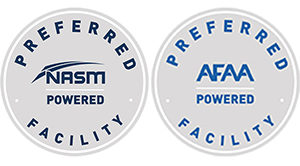Have you ever wondered which fitness classes are best suited to your needs and capabilities? The world of fitness can be overwhelming, especially with so many options available.
As we age, maintaining physical health becomes increasingly important to our overall well-being. The right exercise plan can enhance flexibility, strength, and balance, reducing the risk of falls and injuries. However, not all fitness programs are created equal, and choosing the wrong one can lead to frustration or even harm.
Seniors deserve to feel empowered in their fitness journeys, which is why understanding the various types of fitness classes available is so crucial. From gentle yoga sessions that promote flexibility and relaxation to invigorating aquatic workouts that minimize joint stress, there are classes tailored to every fitness level.
Today, we will explore the types of fitness classes ideal for seniors, helping you make informed choices that align with your health goals and lifestyle. Join us as we uncover the most suitable options to encourage a joyful and active senior life!
The Benefits of Physical Activity and Fitness Classes for Seniors in Communities
Engaging in regular physical activity through fitness classes offers numerous health benefits for both the seniors living in community centers and the centers themselves. Regular exercise, particularly activities that enhance balance and muscle strength, can also help improve the mental health and improve the mood of seniors.
The Centers for Disease Control and Prevention (CDC) has several basic recommendations for adults 65 and older regarding the amount and type of regular exercise they should engage in, and they specify at least 150 minutes of moderate-intensity activities in their weeks.
It doesn’t have to be a single 150-minute fitness routine, but it can be broken up into daily, quick cardio workouts, balance exercises, strength training, etc. It can also be just 75 minutes a week if it’s more vigorous-intensity activity.
Among the wide range of benefits of a consistent and well-made exercise regimen for seniors are:
Improved Physical Health
Regular participation in exercise classes helps seniors maintain and enhance physical health. Exercise strengthens muscles, improves flexibility and bone density, and boosts cardiovascular health. This helps in maintaining mobility, reducing the risk of falls, and managing chronic conditions such as arthritis, osteoporosis, and heart disease.
Increased Strength and Endurance
Strength training exercises, such as resistance band workouts or Pilates, help build muscle mass and improve endurance. This enables seniors to perform daily activities more easily and with less fatigue, promoting independence.
Better Balance and Fall Prevention
Many senior exercise classes focus on improving balance and coordination, which are crucial for reducing the risk of falls—one of the leading causes of injury among seniors. Tai Chi and balance activities are especially effective at enhancing stability and preventing accidental falls.
Enhanced Mental Health and Cognitive Function
Regular exercise not only benefits the body but also the mind. Physical activity stimulates cognitive function, improving memory, concentration, and overall brain health. Additionally, it helps reduce symptoms of anxiety, depression, and stress, promoting a more positive mood.
Social Interaction and Community Engagement
Group fitness classes are social activities and thus provide opportunities for socializing, which is critical for combating loneliness and isolation—common issues among seniors. Being part of a class fosters a sense of belonging and community, which improves mental health and overall well-being.
Improved Flexibility and Joint Mobility
Flexibility exercises, such as chair yoga or stretching classes, help seniors maintain joint mobility, making everyday activities like bending or reaching easier. This can reduce stiffness and discomfort associated with aging and chronic conditions.
Weight Management and Cardiovascular Health
Regular physical activity helps seniors maintain a healthy weight, which is important for overall heart health. Cardiovascular fitness exercises, like aerobic exercises, Zumba Gold, or walking clubs, don’t just help with weight loss or keeping a healthy weight. They also improve heart function, reduce blood pressure, and lower the risk of conditions such as heart disease and diabetes.
Improved Sleep and Relaxation
Exercise contributes to quality sleep patterns by reducing stress and promoting relaxation. After physical activity, many seniors report more restful and restorative sleep, which is key for overall health and energy levels.
The comprehensive advantages of physical activity also effectively encourage seniors to remain active participants in their community centers for longer periods, motivating them to stay at their communities or health centers for longer periods of time. This prolonged engagement not only enhances individual health outcomes but also cultivates a vibrant, supportive community atmosphere essential for the holistic well-being of seniors.
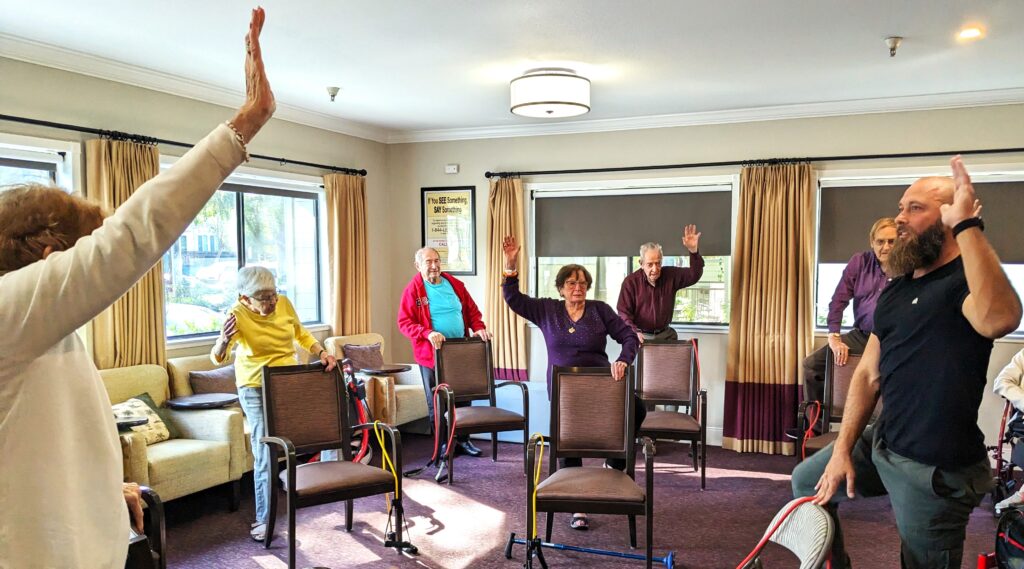
The Most Common Types of Classes a Senior Fitness Program Might Include
Senior fitness programs offer a variety of class types designed to meet the diverse needs and abilities of older adults and make sure they have an active lifestyle.
The actual classes will undoubtedly vary between exercise programs and throughout various locations, but these are some of the most common ones you’re likely to find:
Yoga or Chair Yoga
Yoga, including its adapted form known as chair yoga, stands out as a popular choice in fitness programs tailored for seniors. These gentle forms of exercise are specifically designed to enhance flexibility, maintain balance, and increase strength without putting too much strain on the body.
Especially beneficial for those who might find traditional yoga challenging, chair yoga, much like its cousin chair aerobics, modifies standard yoga poses so they can be performed while seated or with the aid of a chair.
Here are four key benefits of incorporating yoga and chair yoga into senior fitness programs:
- Improved Flexibility and Range of Motion: Regular yoga practice helps increase flexibility and joint health, which are crucial for maintaining daily activities and mobility.
- Enhanced Strength and Balance: Yoga poses focus on building core muscle strength and improving balance, significantly reducing the risk of falls among seniors.
- Stress Relief and Mental Clarity: The meditative aspects of yoga help reduce stress and anxiety and promote a sense of well-being and mental clarity.
- Adaptability for Different Abilities: Whether it’s a standing pose or a seated modification, yoga offers various levels and adaptations to suit individual needs and capabilities, ensuring everyone can participate regardless of their physical condition.
Resistance Band
Resistance band training offers a dynamic approach to strength building in senior fitness programs, providing a low-impact option that caters to varying levels of physical ability. By incorporating resistance bands, these classes help improve muscle strength and overall physical activity without putting undue stress on the joints, which is crucial for aging bodies.
Resistance bands are versatile tools that can be used to target different muscle groups, allowing for a full-body workout or focused exercises depending on individual needs. The elasticity of the bands provides resistance during both the extension and contraction phases of an exercise, enhancing muscle engagement more efficiently than some traditional forms of exercise.
Additionally, resistance band exercises can be easily modified to suit one’s fitness level, making them an excellent choice for seniors who may be new to exercise or returning after a break. The ability to adjust tension and range of motion helps maintain safety and encourages gradual progression in strength training.
For instructors and caregivers, implementing resistance band workouts in senior programs promotes inclusivity. These exercises can be performed standing or seated, accommodating seniors with varying mobility levels.
General Strength Training Exercises
Resistance band exercises are a form of strength training, but there are many others. In general, strength training exercises form a cornerstone of most senior fitness programs, providing crucial benefits in muscle strength, balance, and overall physical endurance.
These exercises are key in reducing the risk of falls, enhancing functional abilities, and fostering a sense of community among participants. By integrating strength training into their routines, seniors can enjoy a higher quality of life and greater independence.
Here are some other effective general strength training exercises often included in senior fitness programs:
- Chair Squats: Essential for leg strength, chair squats support daily activities such as rising from a seated position and enhancing balance.
- Wall Push-Ups: This exercise helps to build upper body strength while reducing strain on joints, making it ideal for seniors.
- Light Dumbbell Exercises: Utilizing light weights, seniors can perform a variety of movements that improve muscle endurance and joint flexibility.
Incorporating these exercises into a regular routine not only builds strength but also connects seniors with a supportive community, reducing isolation and promoting a healthier lifestyle.
Tai Chi
Among the variety of classes typically offered in senior fitness programs, Tai Chi stands out as a highly beneficial option. Originating from ancient Chinese martial arts, Tai Chi is a graceful form of exercise that involves a series of movements performed in a slow, focused manner accompanied by deep breathing.
For seniors, Tai Chi is particularly advantageous as it emphasizes balance exercises, which are crucial for preventing falls—a common concern in older adults. Tai Chi classes are frequently available at community centers, providing an accessible venue for seniors to engage in this gentle yet effective form of physical activity.
These sessions not only improve physical health by enhancing balance, flexibility, and strength but also foster a sense of community among participants. The slow, deliberate movements of Tai Chi help in reducing stress and promoting mental clarity and emotional tranquility.
Additionally, Tai Chi does not require any special equipment, making it a convenient bodyweight exercise for seniors regardless of their fitness level. The inclusivity of Tai Chi ensures that everyone, even those with limited mobility, can participate and benefit from its holistic health advantages.
Thus, Tai Chi serves as an integral part of senior fitness programs, contributing to both physical and mental well-being.
Aquatic Fitness
Diving into aquatic fitness, seniors find a refreshing way to enhance their health and mobility. This form of exercise is particularly beneficial for older adults because the buoyancy of water reduces stress on joints, making it easier to perform movements that might be difficult on land.
Aquatic fitness can take many forms, from swimming to water aerobics, and offers a unique blend of resistance and support, ideal for improving endurance, range of motion, and overall well-being.
Here are four key benefits of aquatic fitness for seniors:
- Improved Joint Health: Water provides natural resistance, which is gentle yet effective for strengthening the muscles around the joints, helping to alleviate pain and stiffness.
- Enhanced Cardiovascular Health: Participating in aquatic exercises increases heart rate and circulation, which is crucial for maintaining cardiovascular health and promoting endurance.
- Increased Muscle Strength: The resistance of water forces muscles to work harder, which strengthens them over time without the added strain that comes from weight-bearing exercises.
- Better Balance and Coordination: Water’s buoyancy helps seniors practice balance and coordination safely, reducing the risk of falls by improving stability and flexibility.
Aquatic fitness classes are a great option and are available in many community centers and fitness locations, providing a supportive and accommodating environment for seniors to stay active.
Personal Private Trainer
Many senior fitness programs, like those from Live 2 B Healthy, include the option of personal private trainers tailored to meet the individual needs and capabilities of older adults. A personal trainer can provide a focused and customized workout plan that emphasizes improving muscle strength, flexibility, and overall health.
Importantly, the one-on-one setting allows for immediate feedback and adjustments, ensuring exercises are performed correctly and efficiently, minimizing the risk of injury.
Personal trainers often operate in various fitness locations, including gyms, community centers, or even the client’s home, providing flexibility and convenience for seniors. This accessibility helps in maintaining a consistent exercise routine, which is crucial for long-term health benefits.
Additionally, personal trainers can adapt exercises to accommodate any physical limitations, focusing on gentle yet effective workouts that enhance muscle strength without overexertion.
Incorporating a personal trainer into a senior’s fitness regimen can lead to significant improvements in physical health, which is vital for maintaining independence and quality of life.
The personal attention ensures that each session is productive, safe, and aligned with the senior’s fitness goals, making it a valuable option for those seeking a tailored approach to their health and wellness.
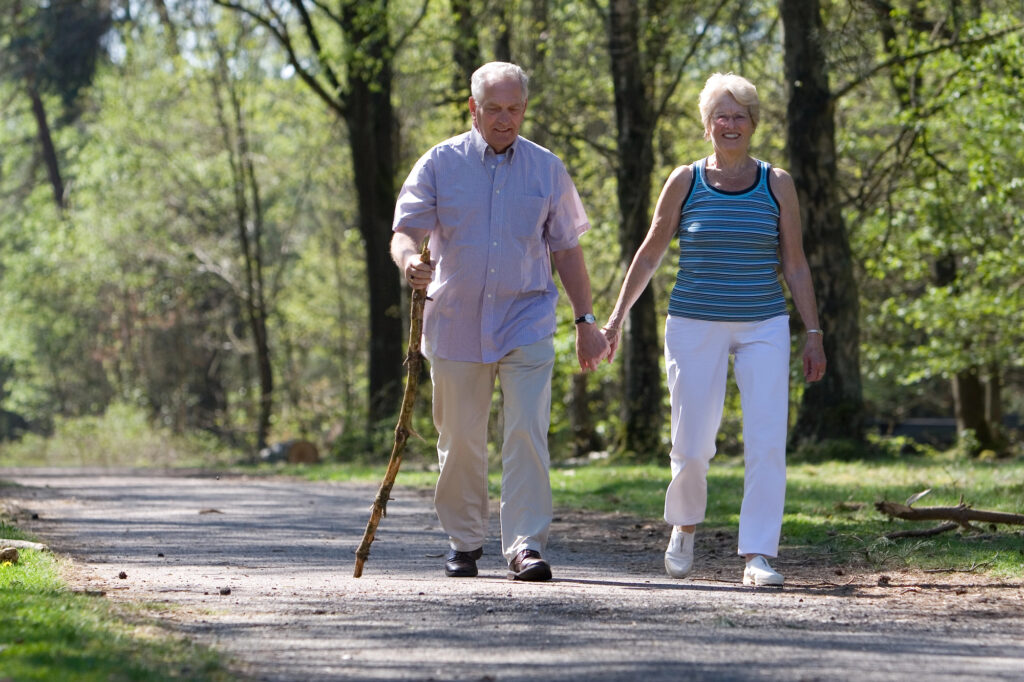
Stability and Balance Exercises
A significant number of senior fitness programs prioritize stability and balance exercises due to their crucial role in preventing falls and enhancing overall mobility.
These exercises are fundamental in strengthening the muscles and improving proprioception, which is the body’s ability to sense movement, action, and location. It’s well-documented that improved stability and balance can significantly reduce the risk of falls among seniors, which is a leading cause of serious injury in older adults.
Balance exercises, such as standing on one foot, walking heel-to-toe, or using balance boards, are tailored to meet the capabilities and safety needs of seniors. These activities not only bolster physical health but also foster confidence in daily movements.
Stability routines often incorporate tools like chairs or handrails to ensure safety while performing various maneuvers that enhance muscle coordination and joint health.
Programs focus on gradual progression, allowing participants to slowly build their confidence and abilities without overwhelming them. This mindful approach ensures that each individual can participate safely and effectively, thereby maximizing the benefits of their physical activity regimen.
Stretching and Flexibility Classes
Building on the foundation of stability and balance, stretching and flexibility classes are equally vital components of senior fitness programs.
These classes focus on enhancing the range of motion, which can significantly reduce muscle stiffness and the risk of falls. By improving flexibility, seniors can maintain better balance and overall physical health.
Here are four key benefits of incorporating stretching and flexibility classes into a senior fitness program:
- Improved Posture: Regular stretching helps correct and maintain proper posture by lengthening tight muscles that tend to pull areas of the body away from their intended position.
- Enhanced Mobility: Increasing flexibility facilitates easier movement in daily activities, which can enhance an individual’s quality of life and independence.
- Decreased Risk of Injury: Flexible muscles are less prone to injuries because they can better handle the physical stresses of varied motion.
- Increased Blood Flow: Stretching exercises improve blood circulation, which aids in recovery from workouts and provides muscles with necessary nutrients.
Flexibility classes should be a staple in senior fitness programs to ensure a holistic approach to health that supports sustained physical activity and a higher quality of life.
Learn About What Live 2 B Healthy Senior Fitness Programs Can Do For You
Exploring the benefits of Live 2 B Healthy Senior Fitness Programs reveals a compelling opportunity for seniors to enhance their physical well-being and social engagement.
These programs are specifically designed to meet the unique needs of older adults by incorporating a range of exercise options that focus on improving balance, strength, and flexibility.
Live 2 B Healthy offers a variety of classes that utilize weights to help build muscle strength, which is crucial for maintaining independence and reducing the risk of falls.
Each class is tailored to accommodate different fitness levels and physical abilities, ensuring that all participants can engage safely and effectively.
Membership in these programs not only grants access to specialized fitness classes but also fosters a sense of community among seniors.
This social aspect is vital, as it encourages regular attendance and active participation, which are key to achieving long-term health benefits. Contact Live 2 B Healthy for the nearest location you can sign up for or if you’re a care provider or community interested in implementing our programs.

